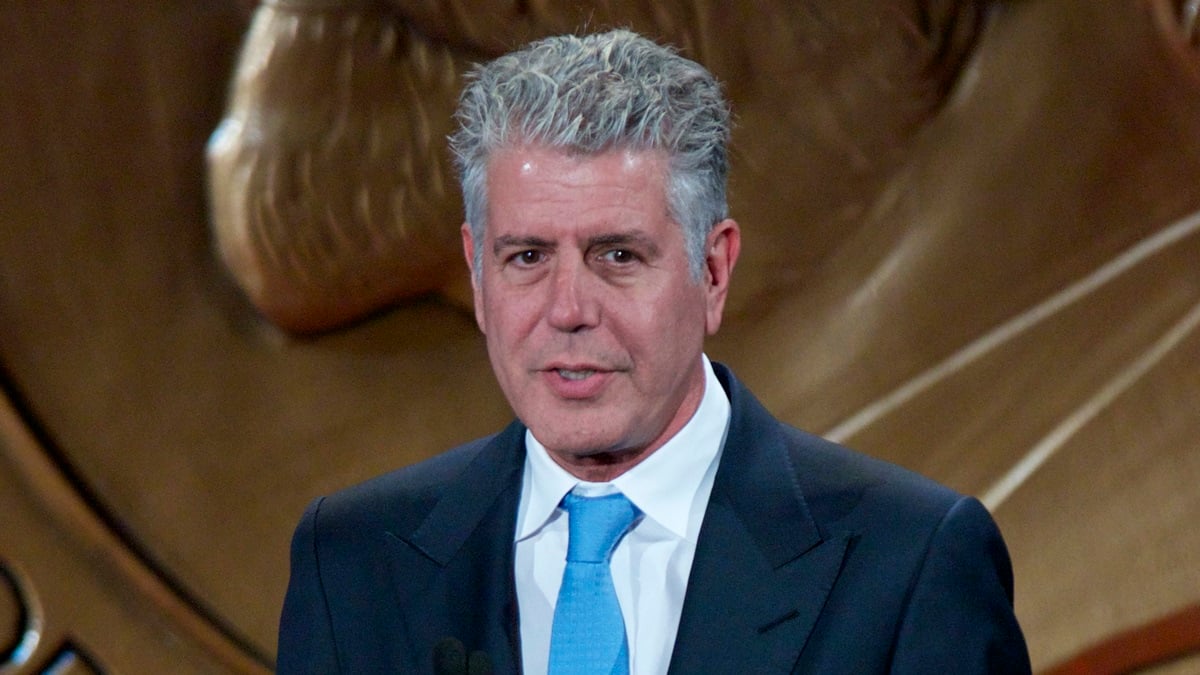Celebrated chef Anthony Bourdain was known for shows, such as Parts Unknown and No Reservations, as well as for authoring a collection of books that delved into his experiences as a chef and the inner workings of the food industry. It’s a little known fact, however, that Bourdain also penned a book about Typhoid Mary, an immigrant cook who was found responsible for outbreaks of typhoid fever in New York in the 1900s.
Typhoid Mary: An Urban Historical was published in 2001, and was the follow-up book to Bourdain’s highly successful non-fiction book Kitchen Confidential: Adventures in the Culinary Underbelly. Although the two works couldn’t be more different, Chron’s John DeMers’ review described Typhoid Mary as having “Bourdain’s raspy, streetwise, ever-confrontational voice.”
Who was Typhoid Mary?

Mary Mallon emigrated from Ireland to the U.S. in 1883, and worked as a cook for wealthy families in New York. Between 1900 and 1907, several people contracted typhoid fever in Long Island and New York City, and those affected were from families that Mallon worked for.
According to Mayo Clinic, typhoid fever is caused by the salmonella bacteria, which may be present in food and water. Symptoms of typhoid include headaches, high fever, stomachache, and diarrhea. Typhoid fever can be treated with antibiotics, but those who are left untreated may die of complications.
Eventually, a sanitary engineer from the Department of Health traced the typhoid fever outbreak to Mallon, who was the common denominator in the reported cases. She reportedly infected 51 people and of those, three died. Despite having the salmonella bacteria present in her system, Mallon didn’t display any symptoms, and it was determined that she was a rare, asymptomatic carrier of typhoid fever.
Mallon was considered a threat to the public and was arrested, but she didn’t go willingly. She couldn’t fathom how she could have been the root of the infection, when she wasn’t even sick. She was confined to a hospital where she underwent tests, and the results showed her gallbladder had the largest concentration of salmonella bacteria. When questioned about her hygiene, Mallon admitted that she rarely washed her hands, even when she handled food. Mallon, who was still in denial about her situation, refused to have her gallbladder removed, and she was sent to live alone in the Bronx and was given work as a laundress in a hospital. In 1910, she was released on the condition that she would never work as a cook again. Mallon, however, wanted to remain in the kitchen.
Mallon changed her name to Mary Brown, and found work as a cook in several businesses. In 1915, there was a typhoid fever outbreak at a maternity hospital where Mallon worked, and once apprehended, she was again forced into isolation until she died in 1938.
What did Anthony Bourdain think about Typhoid Mary?
Book critic Adam Schatz noted that Bourdain may have written about Typhoid Mary, as she was the type of individual that the chef wanted to work in his kitchen. “A professional cook an Irish immigrant, and a defiant outlaw,” Schatz wrote. In Bourdain’s book, it’s evident that he was sympathetic toward Mallon. She was arrested for spreading a disease, and was kept from doing what she loved the most. Bourdain was also impressed by Mallon’s skills in the kitchen, as she was able to keep a job cooking for the elite at a time when it was common to be fired for the simplest reasons. Toward the end of the book, however, Bourdain showed his disapproval toward Mallon for her lack of concern for the wellbeing of others.
“That she clearly couldn’t even be bothered to wash her hands carefully after going to the bathroom… speaks volumes about how far she had fallen and how little she cared.”
In his book, Bourdain shared that he paid tribute to Typhoid Mary by visiting her grave in the Bronx and giving a special gift for the determined woman who wouldn’t stop cooking — his own chef’s knife.

